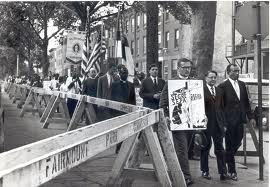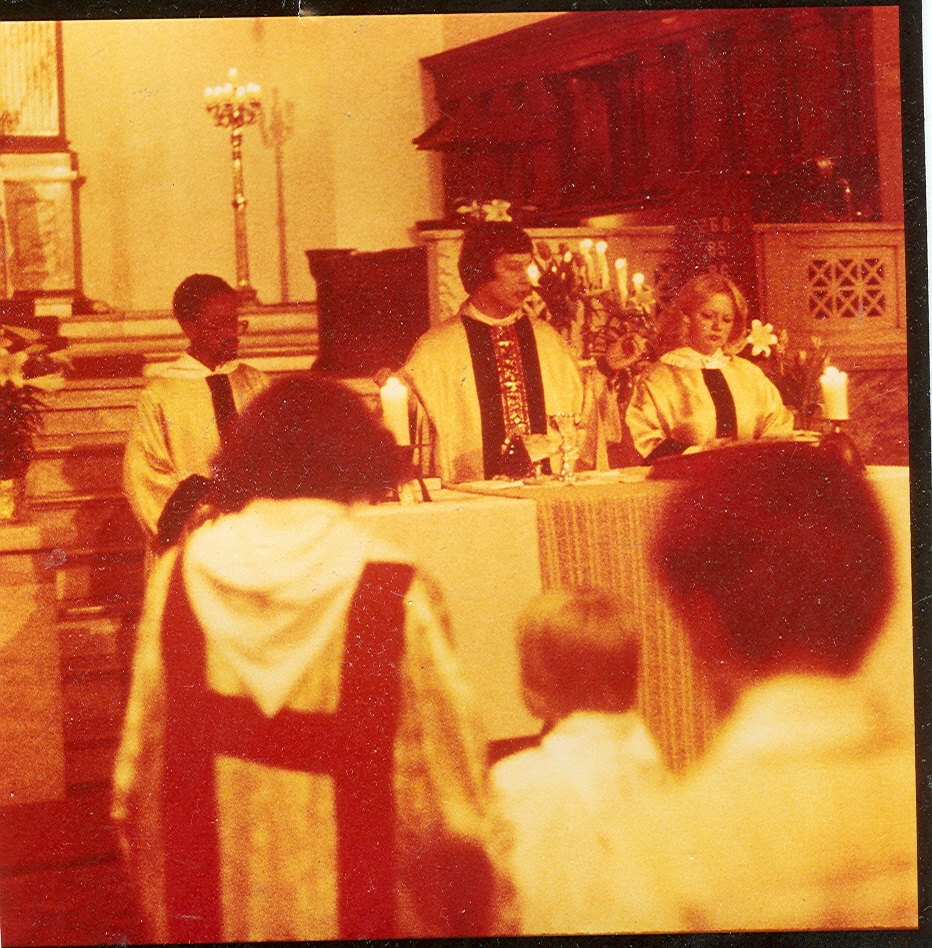What is it to be a parish “community?” What does “real community” look like?
 “Community” has been a longing and an accusation ever since I was in seminary in the late '60s. I had arrived at seminary from four years of university with a major in protesting. For me those years brought me into a segment of the church that was aligned with the civil rights movement. I became an active member of the Congress of Racial Equality (CORE) and the president of two student civil rights groups at Penn State.
“Community” has been a longing and an accusation ever since I was in seminary in the late '60s. I had arrived at seminary from four years of university with a major in protesting. For me those years brought me into a segment of the church that was aligned with the civil rights movement. I became an active member of the Congress of Racial Equality (CORE) and the president of two student civil rights groups at Penn State.
“Community” wasn’t a word I or others used, but it was something experienced. For me it was twofold – those I stood with in the Movement and those I knew as friends in the dorm. Those who were together in a struggle for justice and those who ate meals together in the dining hall. The first was grounded in the claims of the Gospel and the Constitution. The second in easy companionship.
The Communion of Saints
There was a third place of community. Over time I came to realize that the mystery of the Communion of Saints had also claimed me. Of all the assertions of the Apostles’ Creed those I knew to be most certainly true were:
I believe in the Holy Spirit,
the holy catholic Church,
the communion of saints,
the forgiveness of sins
the resurrection of the body,
and the life everlasting. Amen.
I still can’t fully explain how my experience at the Church of the Advocate in North Philadelphia and at Saint Elisabeth’s in South Philadelphia brought me to that place. It had something to do with forgiving and being forgiven, loving and being loved, accepting and being accepted. For me “community” was experienced and the Creed’s statement of it was true enough.
It was in seminary that I first heard the irritable whining about a “lack of community.” Some of it came from the more extroverted and immature students seeking to fill a longing that others of us experienced as invasive, pushy, and controlling. After all, the communion of saints was what it was – an assembly of sinful and limited humans, particular and universal, found in small sub groups of companionship and occasionally larger gatherings with food, wine and beer. It was. We weren’t creating “community,” we were living community – not complete or finished, never perfect or able to fill all longings. It was what it was. That was enough.
The split would show itself over the years between those who believed the Kingdom was God’s gift, now and future, something we got to participate in because it was already present, and those who thought it was something they needed to establish.
Developing a few skills
By the time I took charge of Saint Elisabeth’s I had become aware of another aspect of community – the ways in which a group of people made decisions and how that process enhanced or diminished people; how it increased or decreased trust among them; and how it impacted the parish’s dynamics of stability, conversion and obedience.
My understanding had significantly increased as I worked with an industrial mission doing action-research on how the baptized could change the institutions they were part of. We would video tape groups as they explored how to engage that task in the various sectors of the city’s life (medicine, education, business, government and so on). Then the group would review the tape and consider the process of listening and responding, discernment and decision making, they had gone through. Our focus was on how they worked together and how we could help them improve that work.
That lead me into experiential training programs and a master’s degree as I struggled to become more competent in group processes, organization development and psychology, and how all that intersected with a systems approach to pastoral and ascetical theology. A PDF with thoughts on what competencies are needed by a parish priest.
 So, by the time I was an inner-city vicar I found myself ready, at least somewhat ready, to lead and shape a community that had a strong internal commitment to its decisions, could navigate the complex dynamics of having a strong and clear congregational voice and at the same time strong and clear priestly leadership.
So, by the time I was an inner-city vicar I found myself ready, at least somewhat ready, to lead and shape a community that had a strong internal commitment to its decisions, could navigate the complex dynamics of having a strong and clear congregational voice and at the same time strong and clear priestly leadership.
How did I know that the parish was that way? Because we asked. For example, we did a survey early in the relationship. It included questions like this:
How satisfied are you with the way things are going in the parish now? On a six-point scale 80% were at 5 and 6, the others at 3 and 4.
We also asked about the many changes that had taken place – having a free-standing altar as well as a high altar against the wall, using the then-new Prayer Book, having women priests serving in the parish, pushing for a deeper level of commitment from members. On all the changes there was the same 80% or higher response.
After the survey was completed the results were fed back to members at a meeting. People need to see the results in a timely manner, when they are gathered together and can talk about it. This is called survey-feedback. PDF on survey feedback.
We did the same thing each year. And each year the response was much the same. Occasionally there would be an item where a larger percentage of members expressed concern. Even though that was never more than 30%, we’d explore what might be done to stay with the generally supported direction while making adjustments in response to those with concerns. We came to learn that the “concerns” were often very helpful in improving how we went about things. Hearing the resistance of people, even a relatively small number, often helped us do better. PDF on resistance to change
Since those years I’ve trained and coached thousands of clergy and lay leaders and consulted with maybe a hundred parishes. What I’ve noticed is when rectors are willing to really listen to the collective voice of the congregation and respond honestly – the parish gets healthier, adult relationships are formed and people feel empowered. And when clergy act out of fear, engage in selective listening and manipulate discernment and decision-making processes – the parish lives a half-life, shallow, avoiding needed conversations.
Listening
What happens when rectors really listen to the congregation? When rectors use processes such as mentioned above?
1. The congregation gets to hear its own voice. It’s empowering to hear the collective voice of the congregation. The parish is strengthened.
2. It allows the rector to hear that collective voice. That voice may not be what the rector wants it to be and that may offer both an opportunity for humility and the chance to improve a direction or program.
3. Listening to one another, people to people, leaders and people, is a pathway into love and respect.
4. It is one resource for healthily navigating the bonding process between people and priest. Honest listening helps all parties move from the inflated hopes of a new relationship, through the disappointment that comes with the crashing of our illusions, and into a realistic relationship. See PDF
rag+
Shaping an empowered parish community: Part Two
Shaping an empowered parish community: Part Three